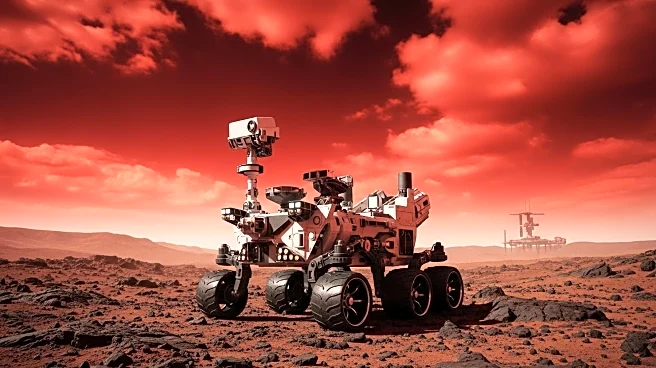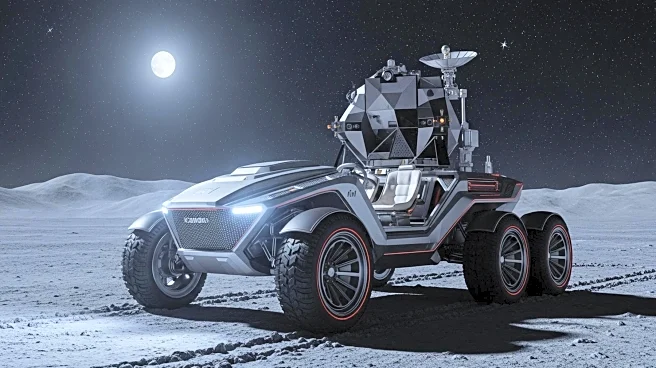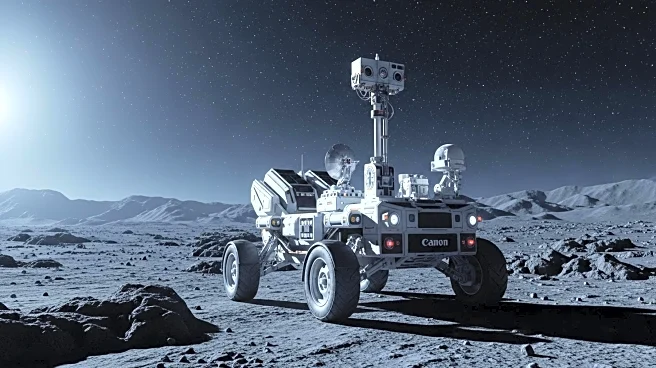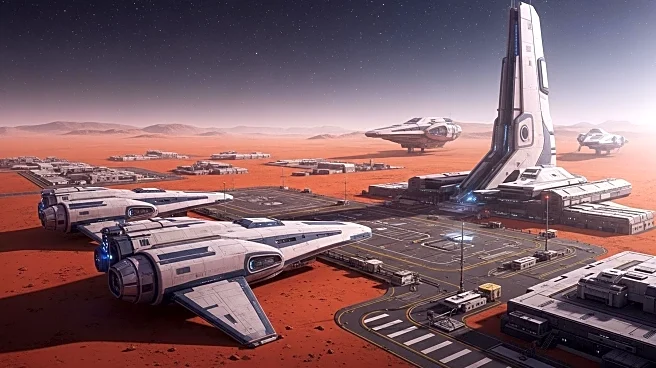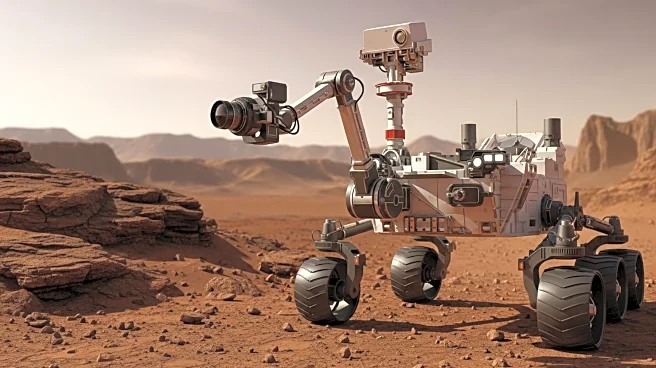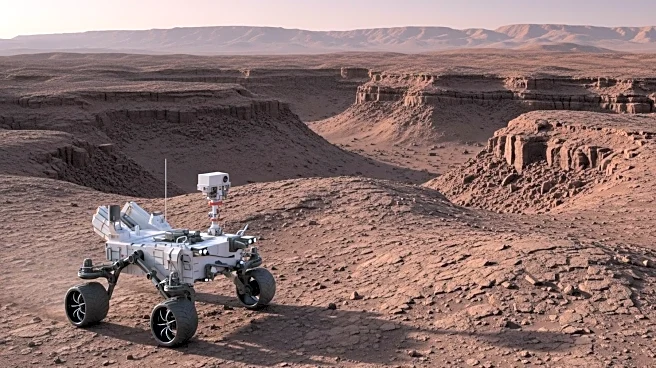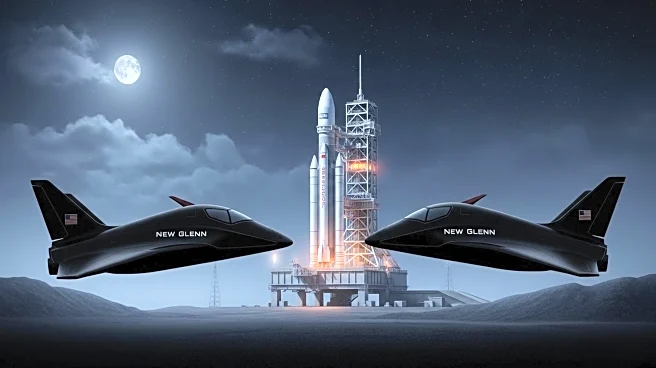What is the story about?
What's Happening?
NASA's Mars Sample Return (MSR) mission, aimed at retrieving geological samples from Mars, is facing significant delays and budgetary constraints. Originally planned for the early 2030s, the mission has become complicated and over-budget, with political challenges further hindering progress. Meanwhile, China's Tianwen-3 mission is on track to launch in 2028 and return samples by 2031, potentially beating NASA in bringing Martian samples to Earth. China's mission, part of a well-funded long-term space strategy, is designed to be leaner and more efficient, targeting a less geologically diverse site for safety. NASA's mission, a joint effort with the European Space Agency, involves complex handoffs and has seen costs swell past $11 billion, with timelines extending toward 2040.
Why It's Important?
The potential success of China's Tianwen-3 mission could mark a significant geopolitical shift in space exploration, echoing the historical Sputnik moment. If China returns Mars samples first, it would symbolize a major achievement in planetary science and could influence global perceptions of space leadership. The scientific implications are profound, as returning Martian samples could provide insights into the planet's past habitability and the possibility of life. For NASA, the delays and budget cuts threaten not only the MSR mission but also broader scientific endeavors, potentially impacting active observatories and planetary probes. The situation underscores the importance of sustained investment in space exploration to maintain scientific and geopolitical leadership.
What's Next?
NASA faces a critical fiscal year, with proposed budget cuts threatening the MSR mission and other scientific projects. If enacted, these cuts could delay the mission for decades, jeopardizing the U.S.'s position in planetary science. NASA has outlined scaled-back alternatives requiring immediate congressional funding to stay on track, but experts doubt the agency can regain lost ground. China's mission, embedded in a long-term strategy, is likely to proceed as planned, with goals for a permanent moon base by 2035 and crewed Mars missions by 2050. The outcome of these missions could shape future space exploration priorities and international collaborations.
Beyond the Headlines
The competition between NASA and China's space programs highlights broader geopolitical dynamics and the role of space exploration in national prestige. The potential for a new 'Sputnik moment' could drive renewed investment in science and engineering education, similar to the post-1957 era. The success of both missions could provide complementary data, enhancing our understanding of Mars and its potential for life. The situation also raises ethical considerations about prioritizing scientific goals over geopolitical rivalry, emphasizing the need for international cooperation in space exploration.
AI Generated Content
Do you find this article useful?
